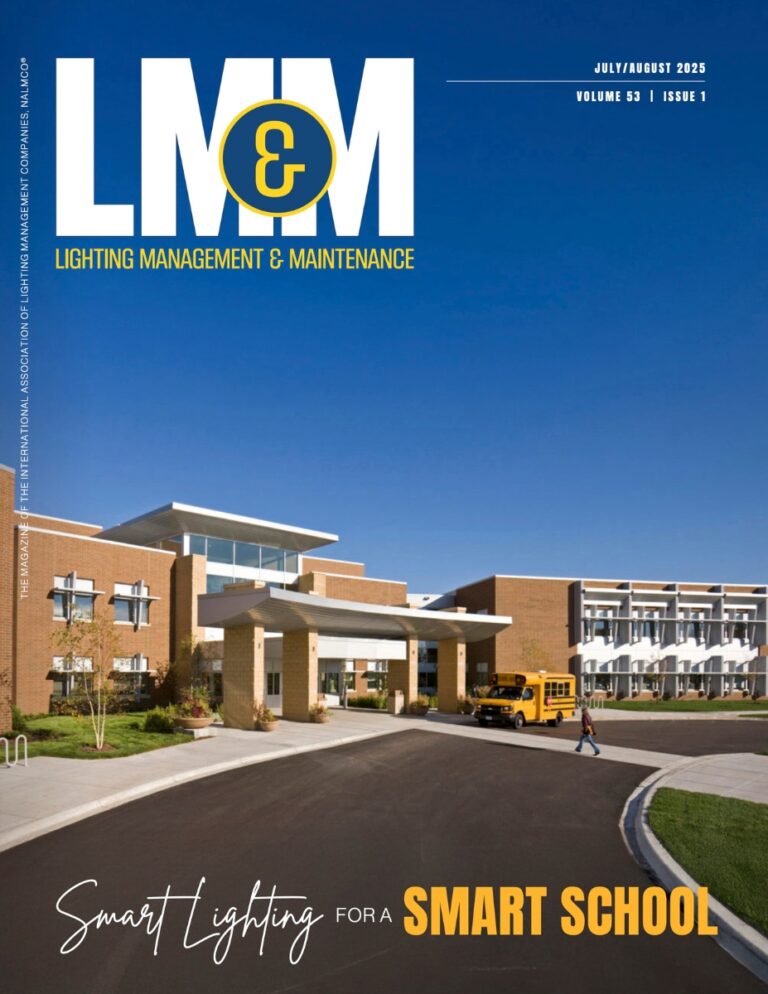Beyond Illumination: How Lighting Trends Are Transforming Commercial Environments
Guest Contributor: Jason McGraw, Group Vice President and Show Director of CEDIA Expo/CIX
For decades, commercial lighting has been viewed primarily as a functional necessity—task lighting to ensure visibility and systems that met minimum code requirements. But times have changed.
Today, lighting is no longer just about illumination. It’s about shaping how people feel, perform, and interact within a space. For commercial integrators, this transformation offers a powerful opportunity to step beyond installation and become strategic partners in designing environments that elevate productivity, well-being, and brand identity.
Lighting for employee health and well-being
Modern commercial lighting has evolved into a dynamic tool that influences everything from cognitive performance to emotional well-being. One of the most impactful areas is human-centric lighting, which aligns with our natural circadian rhythms. These biological cycles, tied to the 24-hour day, regulate sleep-wake patterns, hormone production, and overall mental health. When lighting in the workplace is designed to support these rhythms—by simulating the intensity and color temperature of natural daylight—it can have a profound impact on employee alertness, mood, and productivity.
Cooler, blue-enriched light during the morning hours stimulates focus and concentration, making it ideal for task-heavy environments like offices and conference rooms. In contrast, warmer tones later in the day support relaxation and signal the body to wind down, reducing fatigue and eye strain. As integrators, offering systems that can automatically adjust throughout the day based on circadian principles adds value beyond basic lighting. It becomes a wellness feature that employers can promote to attract and retain top talent.
Lighting for atmosphere and branding
Beyond health and well-being, lighting also plays a critical role in defining the personality and culture of a brand. Businesses across various industries are utilizing lighting to create immersive environments that reflect their unique identities. For example, retail spaces leverage dramatic lighting to highlight product features and influence shopper behavior. Hospitality venues often use warm ambient lighting to create welcoming atmospheres, while high-tech firms may opt for sleek, minimalist fixtures that align with their cutting-edge brand image.
As an integrator, understanding these psychological and branding cues allows you to advise clients more effectively during the planning and design phases. You’re no longer just wiring fixtures; you’re helping shape the way customers and employees feel the moment they walk through the door. Offering custom lighting scenes, tunable white light, and color-changing options gives clients the flexibility to match lighting with their marketing campaigns, seasonal changes, or event programming.
Architectural lighting trends in commercial spaces
Architectural lighting trends are also reshaping the appearance and functionality of commercial environments. Offices, retail stores, and hospitality spaces are incorporating embedded lighting, ambient layers, and focal lighting to define zones, highlight architectural features, and encourage movement through space.
These systems do more than brighten a room—they create narrative and experience. For instance, embedded lighting in stairways or floors can guide users intuitively, while wall washers and uplighting can add drama or calm to a room, depending on the effect desired.
Incorporating architectural lighting into your service offering elevates your role as an integrator, enhancing your value and expertise. It positions your business to work more closely with architects, interior designers, and facility planners—teams who increasingly view lighting as essential to their creative vision. This collaboration opens doors to higher-value projects and recurring revenue from ongoing customization and upgrades.
The future of commercial lighting
Looking ahead, the business model for commercial lighting is changing rapidly. One of the most promising developments for integrators is the emergence of Lighting as a Service (LaaS). This approach allows clients to access state-of-the-art lighting systems through subscription-based models (leases) without the burden of upfront capital expenditure. For integrators, LaaS presents an opportunity to shift from one-time installations to long-term service agreements, providing ongoing maintenance and system optimization. It ensures stable, recurring income while giving clients the flexibility to adapt their spaces as needs evolve.
AI is also poised to revolutionize commercial lighting systems. AI-driven platforms can analyze user preferences, occupancy data, and environmental inputs to create personalized lighting experiences in real time. Imagine an open-plan office where lighting adjusts automatically based on who is present and what tasks they are performing. Or a conference room that modifies color temperature and brightness based on time of day, number of attendees, and scheduled activities. These adaptive systems not only improve comfort and productivity but also reduce energy waste, aligning with corporate sustainability goals.
For integrators, investing in AI-ready systems and developing expertise in smart lighting platforms adds a critical layer of differentiation. It shows clients that you’re not just current with trends—you’re preparing their spaces for the next generation of work and living.
Ultimately, lighting is emerging as one of the most powerful tools in workplace transformation. It influences how people think, feel, and perform, factors that directly impact business outcomes. As commercial integrators, embracing this evolution means shifting your mindset from that of an installer to a strategist. It involves understanding the science of human behavior, the art of brand expression, and the technology that drives automation and efficiency.
Lighting as a strategic tool for workplace transformation
Clients are no longer looking for just lights. They’re looking for experiences. They’re investing in environments that inspire creativity, foster wellness, support sustainability, and reflect their unique identity. By offering advanced lighting solutions that address these goals, integrators can increase project scope, strengthen client relationships, and future-proof their businesses.
For those integrators who want to stay ahead of the curve, events like the CEDIA Expo/Commercial Integrator Expo (CIX) provide invaluable opportunities. These gatherings showcase the latest innovations in lighting technology, smart systems, and design trends from the industry’s leading brands, including AiSPiRE/WAC, American Lighting, DMF, Lutron, and Savant, among many others. They also offer a chance to connect with architects, designers, and technology partners who are shaping the future of integrated environments.
As lighting becomes more intelligent, more personalized, and more central to workplace and residential experiences, integrators are in a prime position to lead. By combining technical expertise with creative vision, you can help clients unlock the full potential of their spaces — and build a thriving business around the light that brings them to life.
CEDIA Expo/CIX 2025 is taking place September 3-6, 2025, at the Colorado Convention Center in Denver. Click here for more information or to register.







